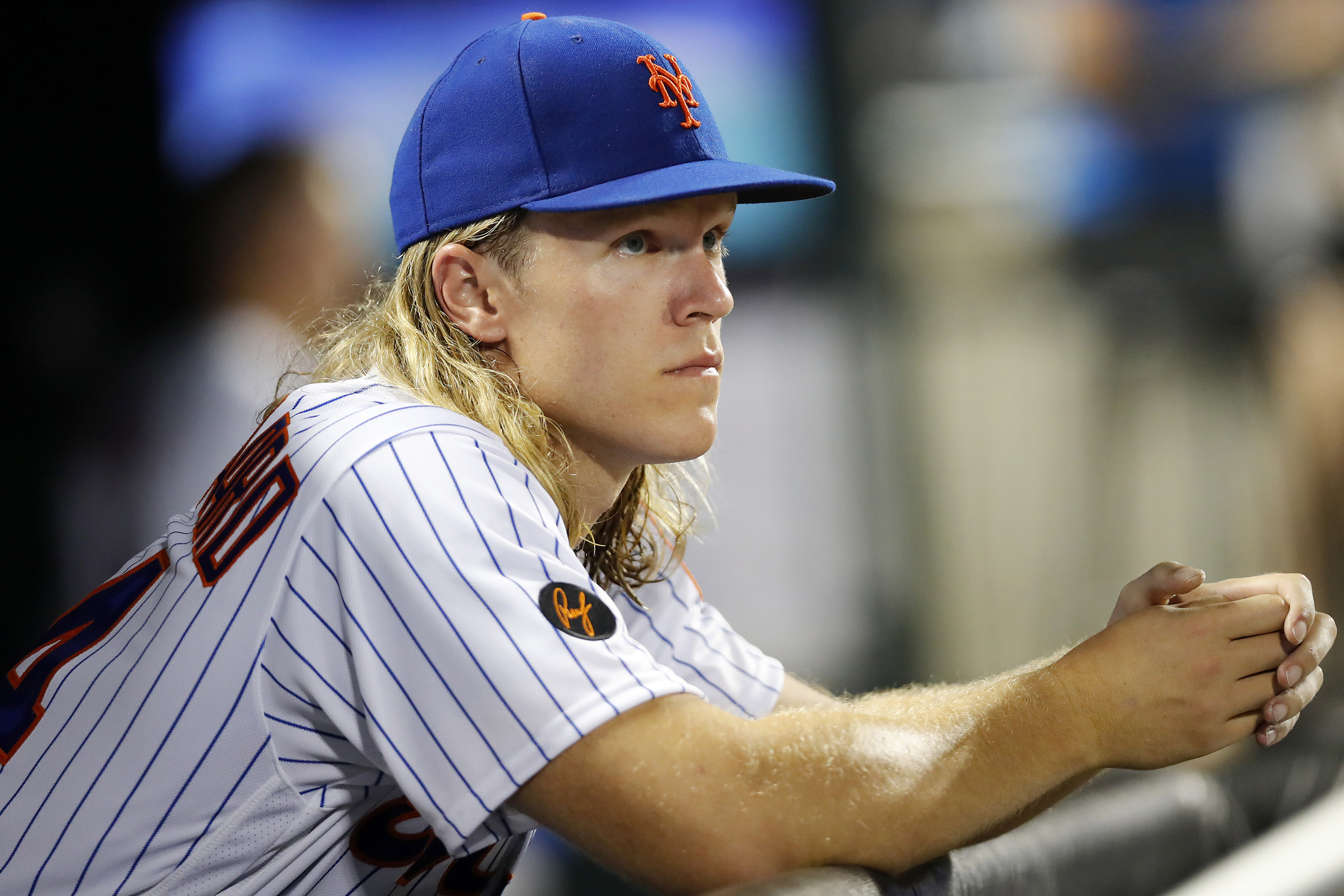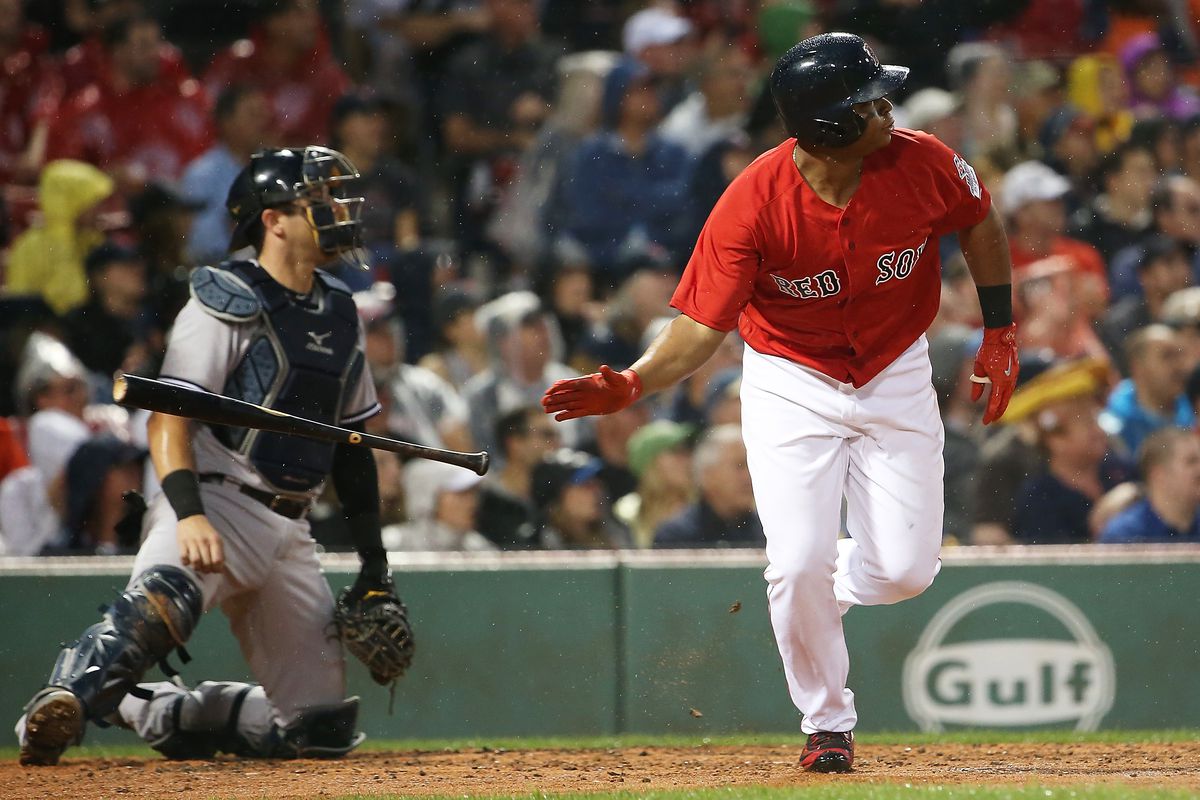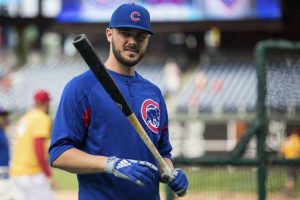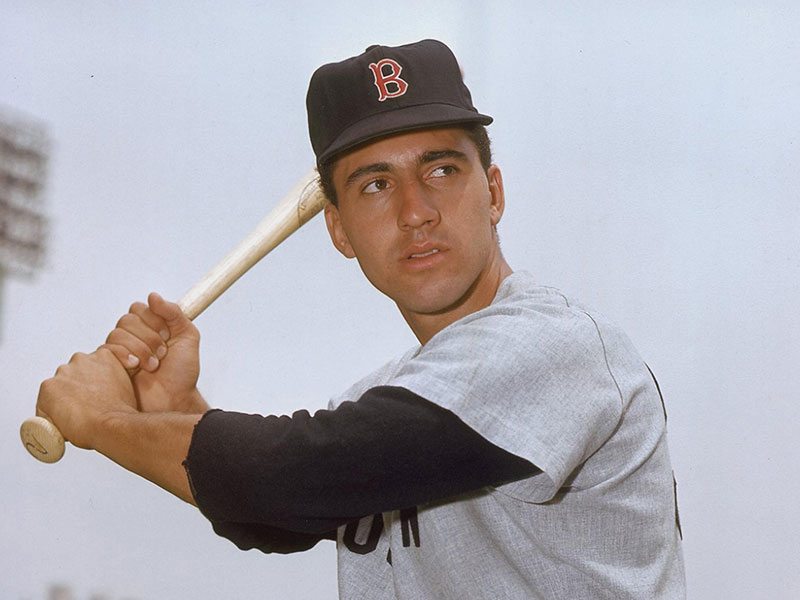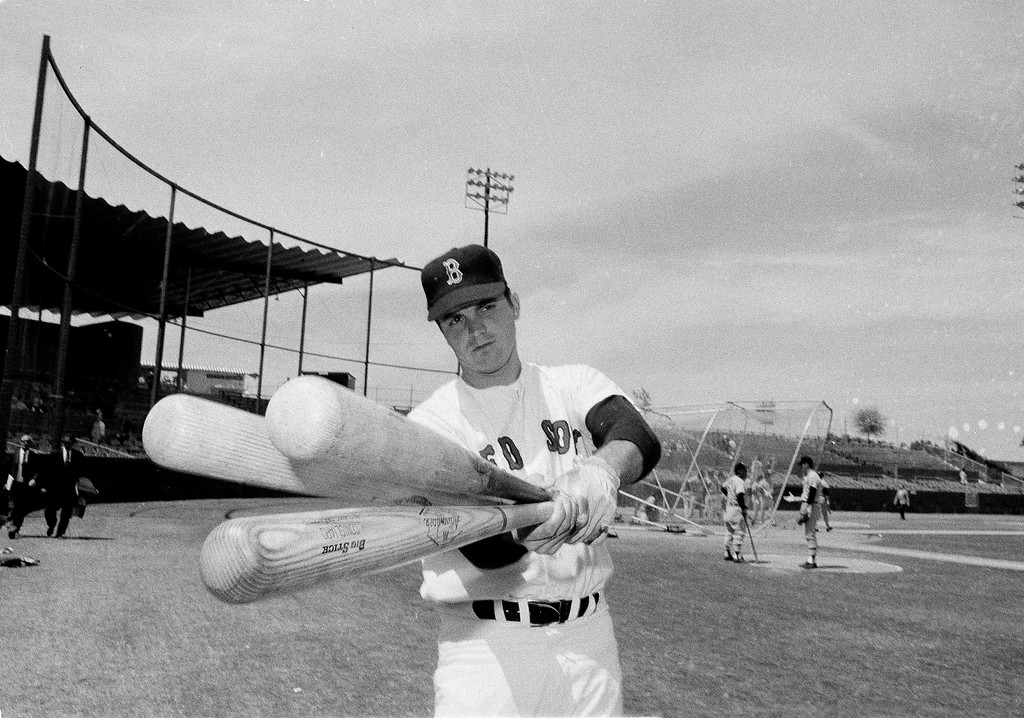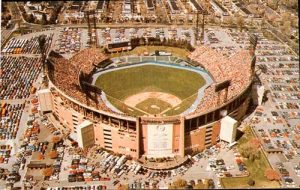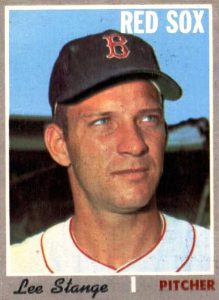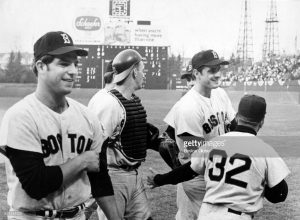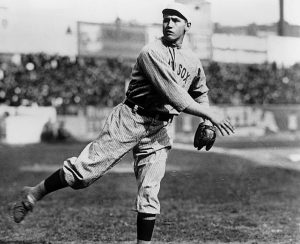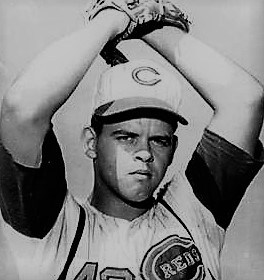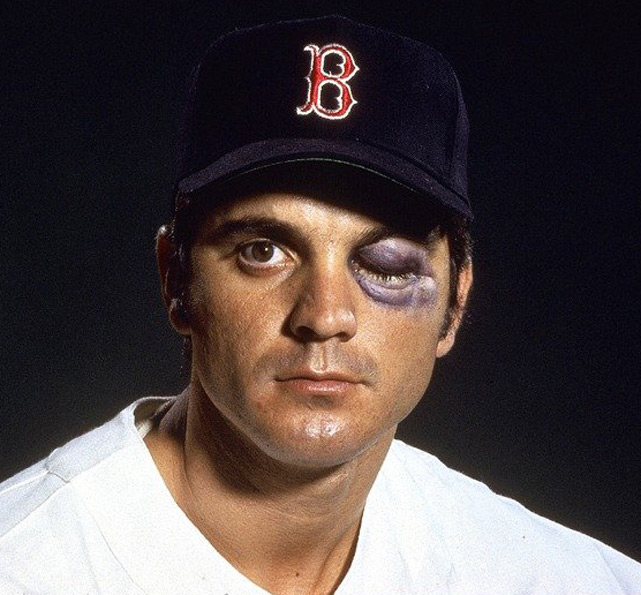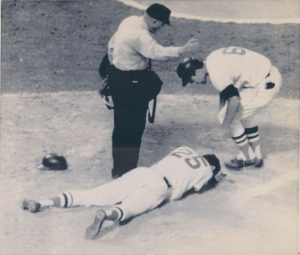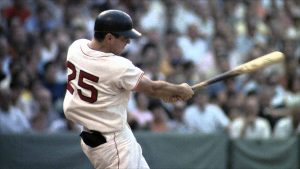I had the privilege of interviewing Red Sox legend Rico Petrocelli the other day. Rico is in the Red Sox Hall of Fame and hit more home runs than any other shortstop in team history when including his work at third base. He was a member of the 1967 “Impossible Dream” team that went to the World Series, and a member of the 1975 Red Sox team that played in the series. Rico has stayed in touch with the game since his retirement and still follows the Red Sox closely today.
BSE: Did you have a nice weekend down in Massachusetts?
Rico Petrocelli: Yeah, in Falmouth. I have another book out with two other authors and I did a book signing down there. I played against or with 56 Hall of Famers and I got to know them. The book is about some of the things I spoke with them about. There are photos of baseball cards, an explanation about the cards, the worth of the cards and something about the players.
BSE: Sounds interesting, what’s the name of the book?
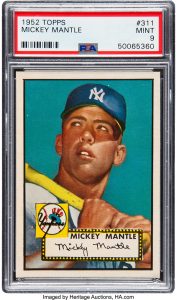
Rico Petrocelli: “An All-Star’s Cardboard Memories.” I used to collect them as a kid, and like most people of my era, we threw them out. I had a card of 52, Mickey Mantle, rookie card. One of them, in perfect condition of course, went for 2.8 million.
BSE: You used to have it?
Rico Petrocelli: Yeah, used to put them in the spokes of the bike; flip them, hit them up against the wall. Who knew? The industry hadn’t been born yet.
So, this ball club, what’s the word? I used to use amazing about a month ago, now it’s…
BSE: Historical I think. On pace to threaten the all-time record for wins in a season.
Rico Petrocelli: That’s right, and they can do it, no doubt. They’re just a good hitting team. Everybody, well when I say everybody I mean the talk show guys say “well, wait until they get into the postseason.” But you know, it’s a month and a half away, let’s talk about it when it gets closer. This club right now is having a remarkable year. Mookie, what can you say about him? But Martinez has just turned things around. I don’t think too many people knew what he’d be in the clubhouse and the guys just love him. He helps with hitting, he’s a hard worker and a great example. I tweeted out the other day, I love Mookie Betts and Mike Trout, but JD Martinez has got to be the front-runner for MVP of this league. The guy has a lot of big hits, a la Big Papi.
BSE: What do you think of Xander this year?
Rico Petrocelli: I think he’s improved 100 percent. We know he’s a good hitter, he’s hit some more home runs, but his defense, his range has improved tremendously; I was happy to see that. He was hurt, but I don’t think he was getting to a lot of balls that he’s getting to this year.
BSE: Do you see any areas of concern for the rest of the season?
Rico Petrocelli: Other than major injuries, no. They feel great about themselves. You see other teams waiting to lose, when the Sox get to the late innings they just get tougher at the plate. But there’s no doubt it will be a battle come postseason. If they ran through some of these teams like nothing in the postseason I’d be very surprised.
BSE: Who do you think is their biggest threat come postseason? Any one team stand out?
Rico Petrocelli: I still think Houston. Once Altuve comes back, and their rotation is more settled. The key with them is their bullpen, I don’t know how much they’ve improved that end, but they’ll need it. They’re definitely beatable, they’re a good team but not as good as last year.
BSE: I’d like to talk some about your playing days if that’s alright? You grew up in Brooklyn watching the Yankees and Dodgers.
Rico Petrocelli: The Giants were there too, we had three teams. Willie Mays was the center fielder for the Giants, of course Mickey Mantle for the Yankees and Duke Snider. All three teams had tremendous players. It seemed to me that the World Series was always Yankees-Dodgers. The Dodgers couldn’t win until 1955, the Yankees had some great teams. I’m the youngest of seven and my brothers were all Yankees fans. I used to go see the Dodgers, when I was real young, to Ebbets Field. Then growing up and making the Majors and getting to play against them? It was like being in baseball heaven.
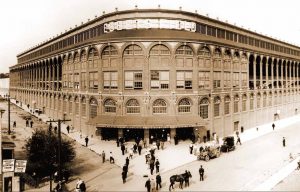
Ebbets Field in Brooklyn, New York.
BSE: You had a brother that worked security at Yankee Stadium right?
Rico Petrocelli: Actually two of them, but the one Dave, he worked there almost all the home games. When we came they’d put him next to the dugout so he could talk to me.
BSE: So was he rooting for the Yankees when you played there?
Rico Petrocelli: Well he said “no, when we play the Red Sox we’ll root for you guys, but our heart isn’t fully in it.”
BSE: What was it like signing with the Red Sox after growing up in New York and having your brothers such big Yankees fans?
Rico Petrocelli: Yeah, the explanation I was given by the Yankees and the Mets out of high school, the Yankees said they just signed five guys to bonuses. The Mets, I don’t know what they were looking for. But it worked out, the old Yankee Stadium was unbelievably large. 463 feet to center, left-center 400. Right field was short, but man. Then when I came to Boston, it was only 200 miles from home.
BSE: You were actually pitching some in high school right, hurt your elbow?
Rico Petrocelli: Yeah, the Dodgers were actually looking at me as a pitcher. Playing in a semifinals city game, I threw 12 innings. In the 12th inning, I threw a slider, I used to throw a hard slider too, probably didn’t hold the ball right. All of a sudden I heard a crack, I threw the ball and there was a loud crack in my elbow and my whole arm went numb. I said “Oh my God.” I was really hurting. Since I was a decent hitter, they threw me out in left field. So the next inning, they get a man on second, a couple of guys on. Where do you think the guy hits the ball? They hit it in the hole, out to me. I had no chance, I threw it underhand.
BSE: That affected you in later years too? You changed your diet and workout regimen before the 69 season?
Rico Petrocelli: Yes, I had calcium deposits in my elbow so I had to lay off dairy products. I had a great offseason working out. Got ready to go in Spring Training and felt great, the ball looked like a grapefruit. I was hitting the ball hard, took it into the season, hit the 40 home runs. I think I was just as surprised as everybody else, but it sure was a thrill to be able to do it.
BSE: Yeah, you hit 97 home runs over three years, and as you mentioned the 40 in 1969 which broke Vern Stephens record for American League shortstops. That stood until A-Rod, do you have any thoughts on him being the one to pass you?
Rico Petrocelli: Not at all, most people don’t like him but I thought he was just a great player. He really focused on what he had to do, and also he was a hell of a shortstop.
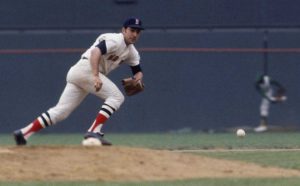
Rico was a sure-handed infielder, setting franchise records for fielding % in a single season at both shortstop and third base.
BSE: Speaking of fielding at shortstop, you had set a single season franchise mark for fielding percentage at shortstop. Then, you volunteered to move to third base for Luis Aparicio?
Rico Petrocelli: Luis Aparicio, they got him at the winter meetings. They called me and said, “you’re probably going to move over to third eventually, would you do it now because we could get Luis Aparicio and we just couldn’t get a decent third baseman.” I said of course, Aparicio was one of the top shortstops in the league, we all respected him. He had a couple good years left.
BSE: Over at third base you set another fielding percentage franchise record, and a Major League record for errorless games in a row at the position.
Rico Petrocelli: I believe so, 77, I think. I don’t know exactly what it was. I had good hands, but of course at short Aparicio was there and he was a Gold Glove, and rightfully so. And when I moved over to third, Brooks Robinson was there, one of the all-time greats. So, I never really had the chance at getting a Gold Glove, but the main thing was helping the team. Frank Malzone helped me when I moved to third base.
BSE: Anyone else you give a lot of credit to for your successes?
Rico Petrocelli: Eddie Popowski was a manager, I had him for two years in the minors and he really helped develop me at short. Then he came up to be a coach too, he was kind of a father image. I was very close to him.
BSE: You played in two World Series with the Sox. Hit two homers in game six in 1967, batted over .300 in 1975. What was it like playing on the big stage and what was the energy like in Fenway back then?
Rico Petrocelli: The energy was incredible, as soon as they opened the gates, so excited. It happened my third year, the first one in 67, which I was just thrilled to be there. I think me, Yaz and Reggie Smith all hit home runs in one inning. I hit another one, maybe earlier in the game.
BSE: And the season kind of saved baseball in Boston.
Rico Petrocelli: Yeah, from what we understand. We didn’t really realize it until later on that Mr. Yawkey was thinking of selling the team or moving the team. We didn’t know that until a year later. A lot of players from the organization came up together, played together as friends, we had a great pennant race between four teams.
BSE: And a lot was done last year to celebrate the 50th anniversary of that team. How does it feel to be a part of a team so widely remembered and celebrated?
Rico Petrocelli: It feels great and I appreciate it, I think all the guys do. The fans have been so great to us over the years. John Henry and Tom Werner have been great to us.
BSE: Last year was also the 50th anniversary of Tony C being hit. What do you think his career could have looked like had that beaning not happened?
Rico Petrocelli: You know I really believe Tony could have been a 500 home run guy. He had a home run swing; he was strong, could hit to all fields, and with power and was a clutch hitter. Then with the DH, I think he could have stayed for a long time. But it was a tragedy.
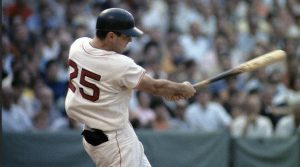
Tony C with a mighty swing.
BSE: When the Sox won finally in 2004, what was that like for you as a former Sox player?
Rico Petrocelli: I was really happy. Really happy for the team, for the fans, it meant so much. The players on the team were great guys, not just as players, but great guys. First of all, coming back from the Yankees, that was just incredible. After they won the World Series, the guys were celebrating and almost every guy they got on said that they were so happy to win, but it wasn’t only for them, it was for the guys who came before them and got so close. That was really classy and very appreciated.
BSE: What are some of your favorite memories from your playing days?
Rico Petrocelli: Certainly the two World Series, Yaz’ great year in ’67 was just phenomenal. I think the game against Vida Blue; Sonny Siebert against Vida Blue at Fenway. Vida was, I think 10-1 and Siebert was 9-0. We were both in first place and they hyped it up like it was a World Series game, it was just incredible. The fans came in to see Vida, he was a phenom. I was fortunate enough to hit two home runs off him and we went on to win the game.
BSE: After your retirement you did a number of things; coaching, broadcasting, radio shows, writing. Did you have a favorite out of those?
Rico Petrocelli: I enjoyed doing the radio in ’79 with Ken Coleman. Ken was a tremendous broadcaster and that was really fun. Since 1977 I’ve been doing some form of broadcasting, including currently. I did pregame and postgame when it was on channel 68, when they had the games for a couple years, and that was fun.
BSE: You worked closely with the Jimmy Fund in the past, do you still do a lot with them?
Rico Petrocelli: Yeah I play in their golf tournaments. I worked with them for three years, was involved with their sports fundraisers with Mike Andrews. What an experience. Tough at times, seeing the kids and the young parents, six or seven year olds getting treatments. But the Jimmy Fund was dear to my heart.
BSE: So what are you up to nowadays in addition to the book?
Rico Petrocelli: These past seven years I’ve been doing a show on Sirius XM on the MLB station, myself and my partner Ed Randall. We do a show called “Remember When.” A lot of our guests are players and managers from the past. We talk a lot about what it was like when they played. A lot of them are currently in baseball, we have some guys who just retired five years ago. It’s good to get some insight from them on how their organization is doing. How an organization decides the path they are going to take, whether to sell off their players for kids and take a lot of losses. We’ve had Hall of Famers; Mike Schmidt, Ozzie Smith, we just had Bob Costas on last week. He is one of my favorite broadcasters.
Then I do a collectibles show; it’s called “The Great American Collectibles Show” with a partner. It’s an hour show and we have the experts in that field come on and talk about all these cards, their worth. That’s been a couple years now. I keep busy.
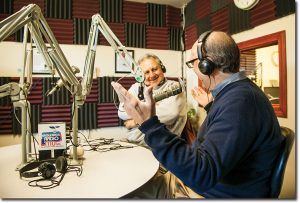
Rico Petrocelli with Tom Zappala recording “The Great American Collectibles Show.”
BSE: That’s all my questions for today, did you have anything you’d like to add?
Rico Petrocelli: Yeah, I go out to book signings or whatever. The fans amaze me with how wonderful they have treated me over the years. They’ll talk about their father’s taking them to see me play.
BSE: That is great to hear.
Rico Petrocelli: Yeah, I’ve been very fortunate, blessed. Whatever happens the rest of the way, I have no regrets. My wife and I had four sons and have nine grandkids; seven girls and two boys.
BSE: Well thank you for your time, I really appreciate it.
Rico Petrocelli: You’re welcome Scott, I enjoyed it. Take care and best of luck.
